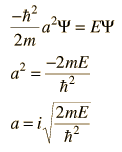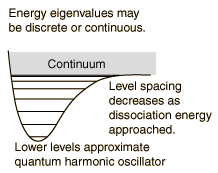Time Dependent Schrodinger Equation
The time dependent Schrodinger equation for one spatial dimension is of the form

For a free particle where U(x) =0 the wavefunction solution can be put in the form of a plane wave

For other problems, the potential U(x) serves to set boundary conditions on the spatial part of the wavefunction and it is helpful to separate the equation into the time-independent Schrodinger equation and the relationship for time evolution of the wavefunction

Schrodinger equation concepts
| HyperPhysics***** Quantum Physics | R Nave |


















